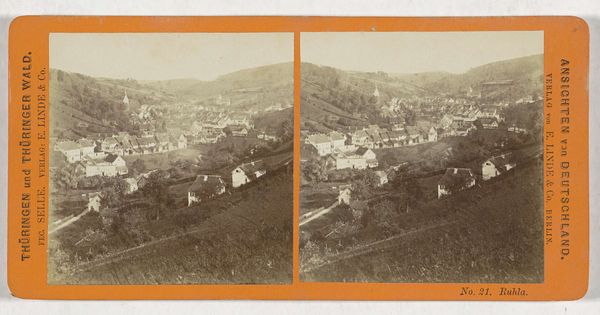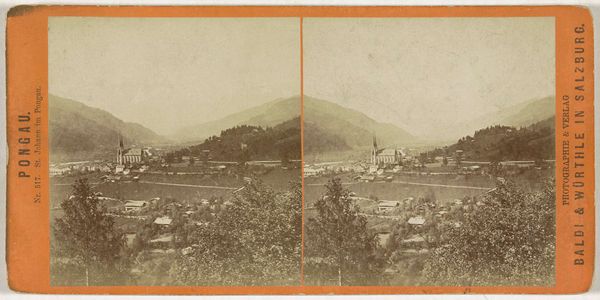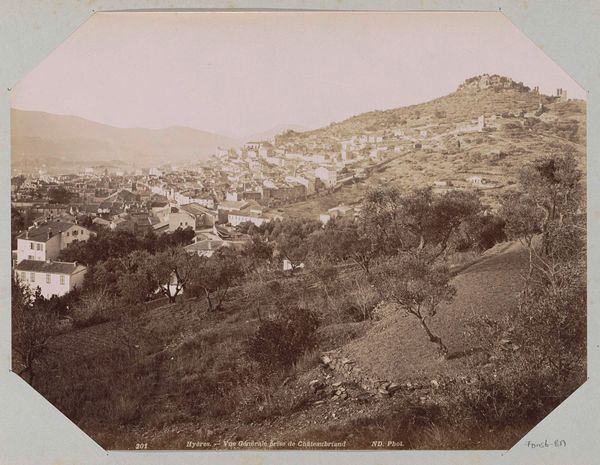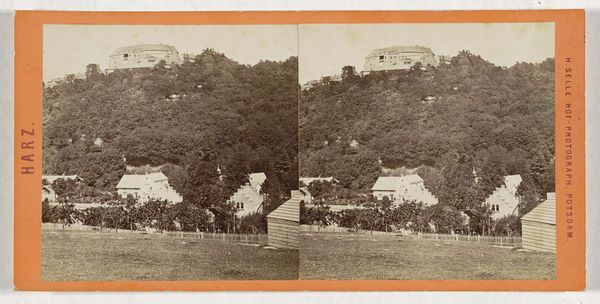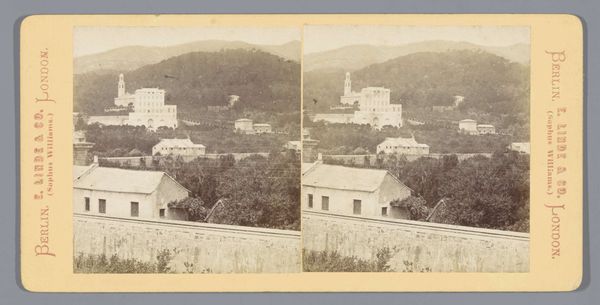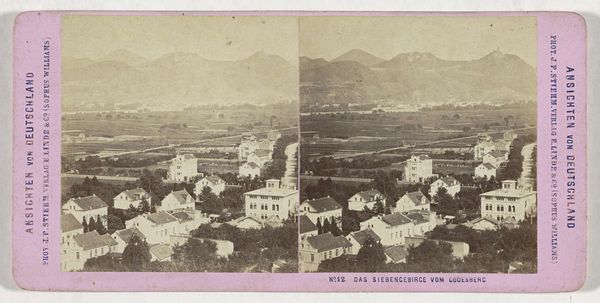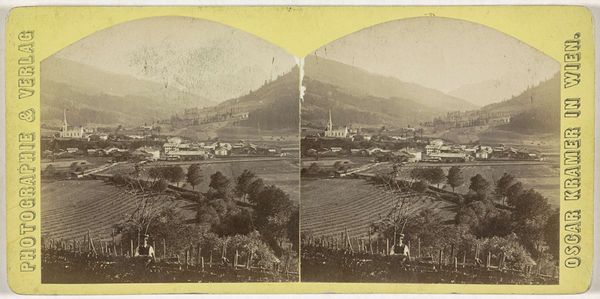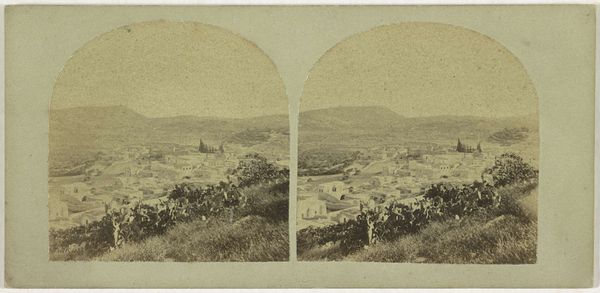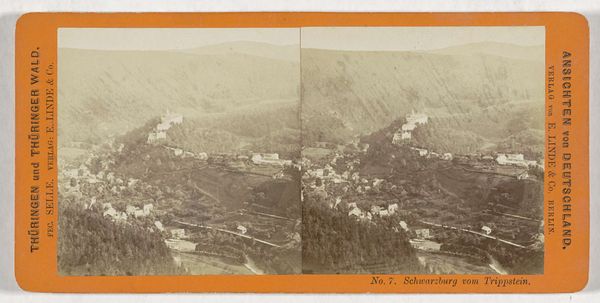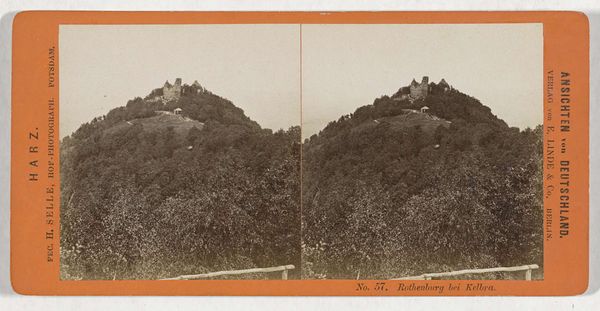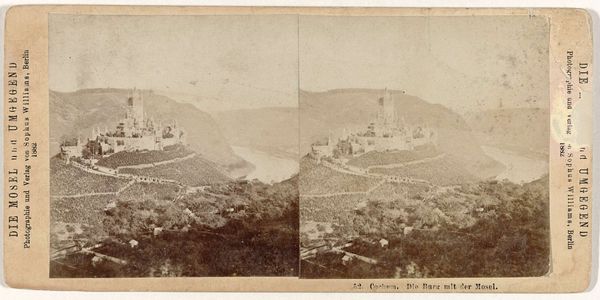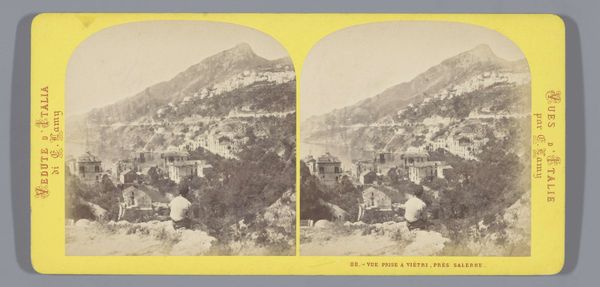
photography
#
landscape
#
photography
#
coloured pencil
Dimensions: height 86 mm, width 176 mm
Copyright: Rijks Museum: Open Domain
This is a stereoscopic photograph of Heidelberg Castle, taken from Molkenkur by Philipp Remelé sometime between 1860 and 1880. Stereoscopic images like this one were a popular form of entertainment and documentation in the 19th century, offering viewers a sense of depth and immersion. Remelé's photograph captures the picturesque qualities of the German landscape, framing the Heidelberg Castle amidst lush greenery and rolling hills. The castle, a symbol of German history and heritage, evokes a sense of romanticism and nostalgia. This aesthetic appealed to a rising middle class eager to connect with their national identity through tourism and visual culture. However, it is important to consider who was excluded from this idyllic vision. While the photograph celebrates German heritage, it elides the experiences of marginalized communities, such as Jewish people or laborers, whose stories are absent from this romanticized narrative. The very act of landscape photography can be seen as a form of claiming ownership over the land, a perspective that often disregards the rights and perspectives of indigenous populations or those without access to property. Ultimately, Remelé's photograph invites us to reflect on the complexities of identity and belonging in 19th-century Germany.
Comments
No comments
Be the first to comment and join the conversation on the ultimate creative platform.
